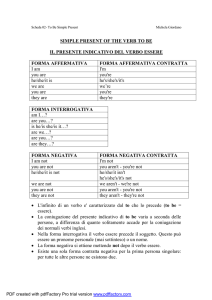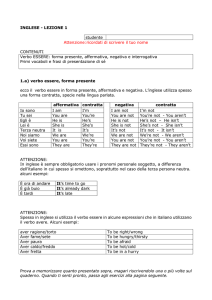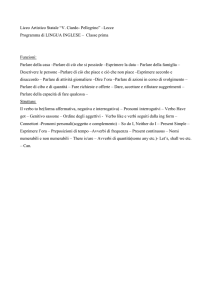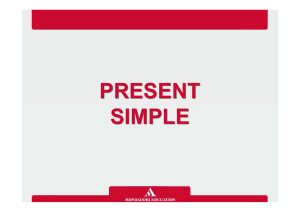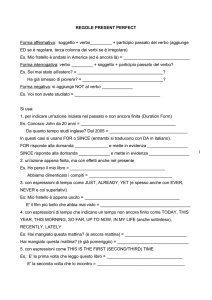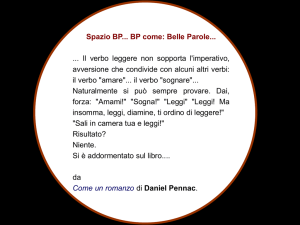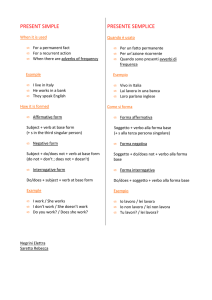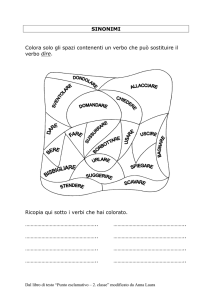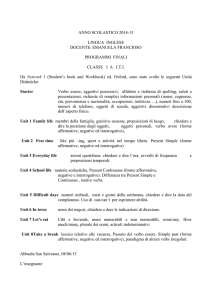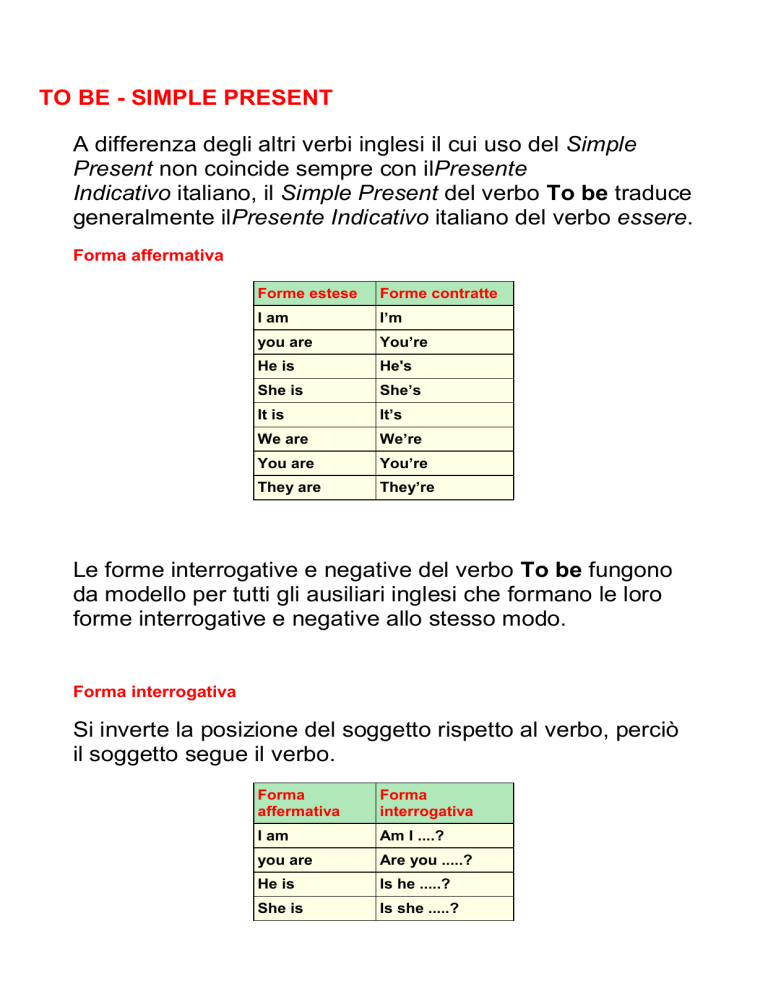
TO BE - SIMPLE PRESENT
A differenza degli altri verbi inglesi il cui uso del Simple
Present non coincide sempre con ilPresente
Indicativo italiano, il Simple Present del verbo To be traduce
generalmente ilPresente Indicativo italiano del verbo essere.
Forma affermativa
Forme estese
Forme contratte
I am
I’m
you are
You’re
He is
He's
She is
She’s
It is
It’s
We are
We’re
You are
You’re
They are
They’re
Le forme interrogative e negative del verbo To be fungono
da modello per tutti gli ausiliari inglesi che formano le loro
forme interrogative e negative allo stesso modo.
Forma interrogativa
Si inverte la posizione del soggetto rispetto al verbo, perciò
il soggetto segue il verbo.
Forma
affermativa
Forma
interrogativa
I am
Am I ....?
you are
Are you .....?
He is
Is he .....?
She is
Is she .....?
It is
Is it .....?
We are
Are we .....?
You are
Are you .....?
They are
Are they .....?
Forma negativa
Il S. Present di To Be è seguito dalla negazione NOT.
Forma
affermativa
Forma negativa
Contrazioni
I am
I am not
I'm not
You are
You are not
You aren’t
He is
He is not
He isn’t
She is
She is not
She isn’t
It is
It is not
It isn’t
We are
We are not
We aren’t
You are
You are not
You aren’t
They are
They are not
They aren’t
Uso delle forme estese
Le forme estese sia affermative che negative si usano:
1. Nell’inglese scritto formale, per esempio una lettera
formale.
2. Nell’inglese parlato, quando si vuole mettere
in particolare evidenza ciò che si sta dicendo. Infatti nelle
forme estese il tono della voce cade sia sul soggetto che
sulla prima vocale del verbo, in questo modo la frase risulta
ben scandita.
Uso delle forme contratte
Le forme contratte affermative e negative si usano:
1. Nell’inglese scritto informale, per esempio una lettera ad
un amico. Anche l’inglese giornalistico o letterario è spesso
informale.
2. Nell’inglese parlato corrente. Il tono della voce nelle
forme contratte cade sul soggetto, il verbo "scivola via", per
cui la frase risulta molto scorrevole.

